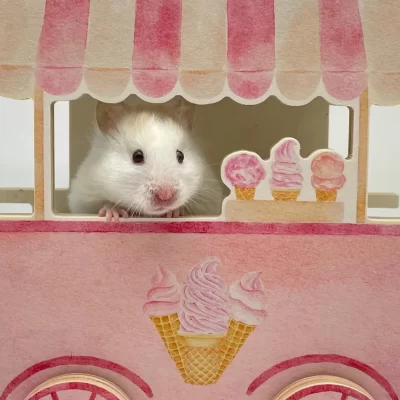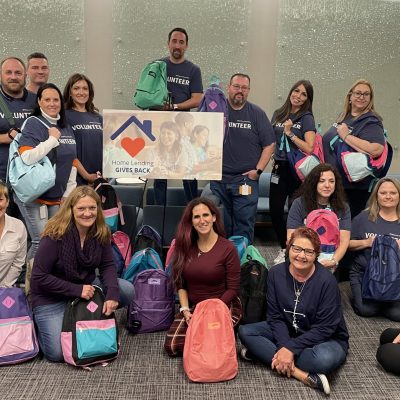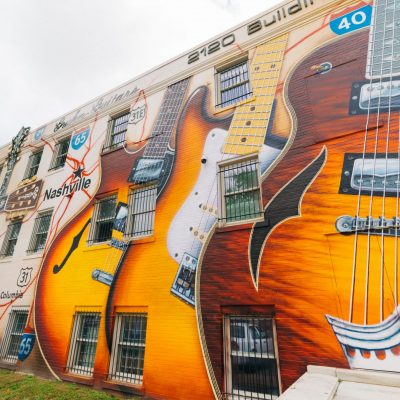April 2020 Cover Story: On the Wild Side

Southwest Conservation Center helps people learn about wildlife and conserve its habitat
It started with a coyote named Don.
In the early 90s, a local farmer riding his tractor accidentally ran over a den of newborn coyotes. Only one pup survived. The caring farmer wanted to help the coyote, but at the time, there were no vets in the area that treated injured or orphaned wildlife. So he gave him to a local family that, later, brought him to an animal lover named Linda Searles.
“I named him after the book, ‘Don Coyote: The Good Times and the Bad Times of a Much Maligned American Original,’” Searles said. “Don hadn’t been fed properly, so he had nutritional cataracts and was imprinted because he had been raised by people. He didn’t know what a coyote was.”
Don stayed with Searles and then lived in her care for 20 years. In that time, this much-maligned American original catalyzed the creation of one of the leading wildlife sanctuaries and rehab facilities in the Southwest. He also became an outstanding ambassador for nature, teaching thousands of people about the importance of wild animals in our shared ecosystem.
To make that all happen, Searles bought 10 acres northeast of Scottsdale in 1994 with the dream of creating a rehabilitation center that specializes in mammals. Over the years, she planted trees and built enclosures to transform the property into a shady oasis for wild animals in need. Today, Southwest Wildlife Conservation Center is home to about 350 wild animals, including foxes, porcupines, coyotes, bobcats, owls, bears, hawks, raccoons, Mexican gray wolves and mountain lions.
When wild animals are found injured, orphaned or have lost their homes to development, they are brought to Southwest Wildlife. “You never know when that door opens what’s going to be walking in,” Searles said. “They can be hit by cars, poisoned, caught in leg-hole traps. We get orphans that have wandered too far from mom or fallen into a drainage pit.”
Animals like a white-nosed coatimundi that migrated north from the Chiracahuas. Or a baby javelina that fell through some grates. Or Boots, a grey fox brought in by the California Department of Fish and Wildlife. All are given a safe place to recover, where their wildness is nurtured along with their health. Fire, police and game departments from across the U.S. send in animals, as do citizens who drop off animals they find, such as orphaned bunnies or javelinas.
The goal is to offer animals a quiet place to heal, rest and recover, and then release them back into the wild — an aim that Southwest Wildlife accomplishes more than 70 percent of the time. Some animals take just a few weeks; some require a longer stay. Either way, the team at Southwest Wildlife tries to return animals — healthy and wild — back to where they belong, with minimal human contact.
Animals that can’t be released for various reasons — they’re too friendly, have been declawed or couldn’t survive in the wild — are placed in zoos and other various accredited facilities. Others remain in Southwest Wildlife’s sanctuary and live out their lives in peace while serving a valuable purpose for us all.
“Once you start working in wildlife rehabilitation, you realize why all of these animals are coming in and feel compelled to teach people to live with wildlife,” Searles said. “Education is essential.”
To help with this, Southwest Wildlife offers guided tours where docents share stories about the animals in their care. “They explain why they’re there, and why they shouldn’t be. That somebody wanted a pet fox or mountain lion, so they killed their mother and stole the babies so they could have a pet or make some money. Or they were shot or were in a trap and that’s why they lost a leg,” Searles said. “People relate to that animal’s individual story and why we should look out for them.”
Southwest Wildlife also practices what’s called conservation medicine, doing research such as vaccine trials for javelinas to try to protect them from canine distemper, or diet studies to try to better understand and help animals in the wild.
“When you say research, people think of it in a bad way. But we’re treading new territory in some areas and finding ways to keep animals healthier, from the young to the old. That’s really important,” Searles said.
One of the programs Southwest Wildlife is most proud of is its endangered species program for Mexican gray wolves. “We currently hold 17 Mexican gray wolves for U.S. Fish and Wildlife for the reintroduction program,” Searles said. By caring for this rare wolf — Searles estimates there are only about 120 in Arizona now — she and her team are contributing to the recovery of an endangered species.
Some of the wolves are released back into the wild, either in the U.S. or in Mexico. Southwest Wildlife also harvests oocytes — immature egg cells — from older females and collects semen from males and ships them to St. Louis to be frozen for future breeding. “As these wolves age, you’re going to lose those genetics. But if we capture and freeze them for later use, we can save those genetics,” Searles said.
It’s something Dr. Lee Egar, who volunteers at Southwest Wildlife, finds very gratifying. “We are part of the breeding program to ensure their genetic diversity and genetic integrity move forward for generations, which is something that will matter long past our lifetimes,” he said.
Another impact that will stretch long into the future is Southwest Wildlife’s mentorship of wildlife workers of tomorrow. Southwest Wildlife runs veterinary and biology intern programs to offer hands-on experience treating wildlife. “We’re laying the groundwork for future veterinarians and wildlife rehabbers. We want this to outlive us,” Searles said.
Jordyn Blew, who grew up in Arizona but now attends Dartmouth College, appreciates her internship at Southwest Wildlife. “I don’t know of any other opportunities like this, where you get to work with wild animals like a mountain lion,” she said. “I don’t know anything this hands-on, where you get to make such a difference in the individual animal’s lives.”
Southwest Wildlife’s clinic is equipped to provide stem-cell therapy, ultrasound, digital X-rays, dental care, anesthesia and more. Whether a dehydrated bobcat needs an IV or a coyote requires life-saving surgery, specially trained staff and volunteers are on call to respond to any wild mammal emergency that arises.
Gray Wirtanen, an intern who studied biology and ecology, enjoys this aspect of her work at Southwest Wildlife. “We’re giving animals, especially those that have been hit by cars or poisoned by rodenticide, a second chance. If Southwest Wildlife weren’t here, these animals would be dying,” she said.
Second chances are something Linda Searles knows all about, and one of her favorite stories revolves around a jaguar-leopard hybrid named Leonardo, who came to Southwest Wildlife in 2011.
Leonardo was born in Las Vegas and bred to perform in magic shows. “They had declawed him and taken his canines out, which is a terrible thing to do,” Searles said. When the show closed, Leonardo was sold and moved to the Arizona-Mexico border and was not properly cared for.
By the time he arrived at Southwest Wildlife, he had severe pneumonia, infected feet and couldn’t stand. After a lot of antibiotics and excellent medical care, he regained his health but not his trust for people. “He had been taunted and teased, poked with sticks, so he really hated people,” Searles said.
Determined to make a difference, Searles sat at his cage every day with her back to him. “In the beginning, he would swipe at the fence, hiss or charge the fence, but I would just sit there and not move,” she said. Then one day, Leonardo laid with his back to Searles, and she knew it was a giant step. “From there, we gained his trust and it got to be where if you’d call him, he’d come running,” she said.
Leonardo spent the last eight years at Southwest Wildlife but had to be put down in February. Though it was a painful decision for Searles and everyone at Southwest Wildlife, it was the right choice because, at 17, Leonardo’s kidneys were failing and he had lost a substantial amount of weight. “We’re still broken up about it,” Searles said. “He had had such a terrible life that we tried to make every day Christmas for him. He got a present every day.”
Searles has always had an affinity for wildlife and a connection with nature. She grew up on an Arizona ranch that did both farming and cattle ranching. “I was a sick child and always found comfort and friendship with animals,” she said.
Perhaps that’s why she literally lives at the wildlife center she created. “My house is attached to the hospital,” she said. “When I moved here, the plan was to have a center and do some education. That was 26 years ago, and the plan took off and has been very successful.”
That success is in large part due to the dedicated animal lovers who volunteer at Southwest Wildlife. “We have about 100 volunteers who do everything from cleaning in the clinic to animal care to running errands to going on rescues,” Searles said. “We have veterinarians and vet techs who donate their time. And then we have people who do fundraising. So there’s a lot of different jobs that make the wheel turn. It’s a village of volunteers, staff and donors that make it happen.”
The public is also part of the equation. Southwest Wildlife welcomes about 7,000 visitors each year, drawn mostly by word of mouth. “We’ve been called the best-kept secret in the Valley,” Searles said.
Searles is grateful for everyone who has been part of turning her dream into reality. “And that includes the citizen that takes time out of their day to call and say there’s a coyote that’s been hit on the side of the road or a javelina that’s injured in their backyard,” she said.
In the end, Searles and her team hope not only to educate but inspire people to learn about and respect our wildlife and conserve its habitat. “I think part of it goes a little bit to repairing some of the impact that we have living in the desert,” Dr. Egar said.
“In some cases, you feel like you’re righting a wrong,” Searles said.
To learn more, go to southwestwildlife.org.






